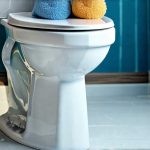Frequent urination – needing to pee more often than feels ‘normal’ – can be incredibly disruptive, impacting everything from work productivity to social life and even mental wellbeing. It’s not just about the inconvenience; it’s often accompanied by anxiety—a constant worry about where the nearest restroom is, a fear of accidents, and a general sense of being controlled by your bladder. This leads many people to restrict their activities, avoid travel, or experience significant stress simply because they’re afraid of needing to urinate frequently. Understanding why this happens, and learning practical strategies to manage it without succumbing to fear, is key to regaining control and living a fuller life. It’s crucial to remember that frequent urination itself isn’t necessarily a sign of something serious; often, it’s manageable with lifestyle adjustments and, if necessary, professional guidance.
This article aims to move beyond simply describing the problem and offer tangible steps towards alleviating both the physical discomfort and the emotional burden associated with frequent urination. We’ll explore common causes (acknowledging that self-diagnosis is never recommended), delve into behavioral techniques to calm bladder anxiety, and provide strategies for building confidence in everyday situations. The goal isn’t just about reducing trips to the bathroom; it’s about reclaiming your freedom and peace of mind. It’s about understanding that you can live a full, active life even while managing this condition – or seeking appropriate medical attention if needed.
Understanding Frequent Urination & Its Emotional Impact
Frequent urination is defined differently for everyone, but generally refers to needing to urinate more than eight times in a 24-hour period. However, it’s the perception of frequency and its impact on daily life that’s often the biggest issue. Many factors can contribute to increased urinary frequency, including fluid intake (especially caffeinated or alcoholic beverages), certain medications (diuretics are common culprits), underlying medical conditions like diabetes or urinary tract infections, and even psychological factors such as anxiety itself. It’s important to differentiate between genuine physiological needs and what feels frequent due to heightened awareness or fear. A vicious cycle can develop where the fear of needing to urinate leads to increased monitoring of bladder sensations, which then amplifies the feeling of urgency.
The emotional toll is significant. People experiencing frequent urination often report feelings of:
– Embarrassment and shame, particularly if accidents occur.
– Anxiety and worry about finding restrooms in public places.
– Social isolation as they avoid activities or situations where access to a bathroom might be limited.
– Reduced self-confidence and overall quality of life.
This anxiety can then exacerbate the problem, creating a feedback loop. The more you focus on your bladder, the more sensitive it becomes, leading to increased urgency and frequency. It’s vital to recognize this psychological component – addressing the fear is just as important as understanding the physical causes. Cognitive Behavioral Therapy (CBT) techniques, discussed later, can be incredibly helpful in breaking this cycle.
Bladder Retraining: A Step-by-Step Approach
Bladder retraining isn’t about forcing yourself to ‘hold it’ for longer periods; it’s about gradually increasing the time between bathroom visits and regaining control over your bladder signals. It requires consistency and patience, but can be remarkably effective. Here’s a basic approach:
- Keep a Bladder Diary: For 3-7 days, track when you urinate, how much fluid you drink, and any associated sensations (urgency levels, triggers). This provides valuable baseline data.
- Set Initial Voiding Intervals: Based on your diary, identify the shortest time between urination. Start by adding just 15-30 minutes to that interval. For example, if you typically urinate every hour, aim for 75-90 minutes initially.
- Distraction Techniques: When you feel the urge to go before your scheduled time, employ distraction techniques like deep breathing exercises, mental math, or focusing on a different activity. The goal isn’t to completely ignore the urge, but to delay it long enough to reach your interval.
- Gradual Increase: Every few days, if you’re successful at maintaining the interval without accidents, increase it by another 15-30 minutes. Continue this process until you reach a comfortable and functional voiding schedule.
It’s crucial to be kind to yourself during this process. There will be setbacks – times when urgency overwhelms you. Don’t view these as failures; simply acknowledge them and return to your scheduled intervals. Consistency is key, even if it means taking small steps forward. And remember that bladder retraining works best when combined with other lifestyle modifications (see below).
Lifestyle Adjustments for Bladder Health
Certain lifestyle factors can significantly impact urinary frequency and urgency. Making adjustments in these areas can often provide substantial relief:
- Fluid Management: This isn’t about restricting fluids, but rather when and what you drink. Spread your fluid intake evenly throughout the day, avoiding large volumes at once. Reduce or eliminate caffeinated beverages (coffee, tea, soda), alcohol, and artificial sweeteners, as these can irritate the bladder.
- Dietary Considerations: Some people find that certain foods trigger their bladder symptoms. Common culprits include spicy foods, citrus fruits, tomatoes, and chocolate. Keep a food diary alongside your bladder diary to identify any potential triggers.
- Pelvic Floor Exercises (Kegels): Strengthening the pelvic floor muscles can improve bladder control and reduce urgency. These exercises involve contracting and relaxing the muscles you use to stop the flow of urine. However, avoid doing Kegels while urinating, as this can actually weaken the muscles over time. A physical therapist specializing in pelvic health can provide personalized guidance on proper technique.
Addressing Anxiety & Fear: Cognitive Behavioral Techniques
The anxiety surrounding frequent urination is often a self-fulfilling prophecy. Cognitive Behavioral Therapy (CBT) techniques can help break this cycle by addressing the negative thought patterns and behaviors that contribute to fear.
One key CBT technique is cognitive restructuring. This involves identifying and challenging anxious thoughts about your bladder. For example, if you find yourself thinking “I’m going to have an accident in public,” challenge that thought with questions like: “What evidence supports this thought?” “What’s the worst that could realistically happen?” “Have I ever had a similar situation before without incident?” Replace negative thoughts with more realistic and balanced ones.
Another helpful technique is exposure therapy. This involves gradually exposing yourself to situations that trigger your anxiety (e.g., going to a movie, traveling) while practicing relaxation techniques. Start with less anxiety-provoking situations and slowly work your way up. The goal isn’t to eliminate the anxiety completely, but to learn how to manage it effectively.
Finally, mindfulness practices can help you stay present in the moment and reduce overall anxiety levels. Techniques like deep breathing exercises and meditation can calm your nervous system and improve your ability to cope with stressful situations. Remember that seeking support from a therapist trained in CBT is often beneficial for developing these skills.
It’s important to reiterate: this article provides general information and should not be considered medical advice. If you are experiencing frequent urination, it’s crucial to consult with a healthcare professional to rule out any underlying medical conditions and receive personalized recommendations. Don’t let fear control your life – take proactive steps towards understanding and managing your bladder health, and reclaim your freedom and peace of mind.





















